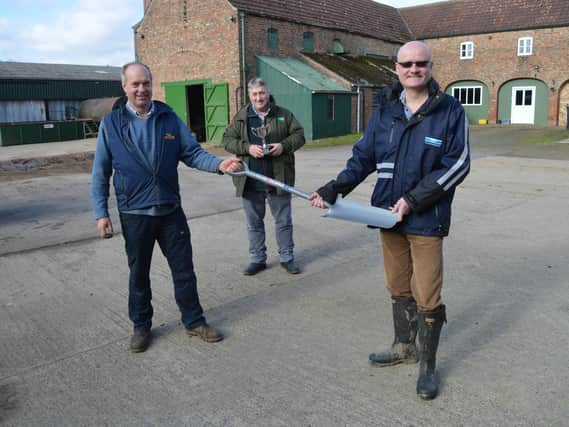Meet the Dishforth farmer who has won a competition to reduce carbon emissions through "pop up rainforest" cover crops


Dubbed “pop-up rainforests” by Cover Crop of the Year organisers Sustainable Landscapes, the 50 farmers taking part removed nearly 3,000 tons of carbon from the atmosphere in two months by using the cover crops, which feature a mix of plants including legumes and brassicas, between food crop rotations.
The sacrificial crops are used to boost the soil organic content which over the last 60 years has fallen by around 50 per cent, reducing soil quality, nutrient concentration and its ability to absorb carbon or hold water.
Advertisement
Hide AdAdvertisement
Hide AdPaul Rhodes, director of food supply chain consultancy Future Food Solutions which created the Sustainable Landscapes partnership, said the competition had started around three years ago with 10 farmers taking part.
He said: “We started Cover Crop of the Year as a tongue-in-cheek way to encourage the farmers in our innovation groups to grow more cover crops.
“Around 10 signed up for the first year, this year has been closer to 50 and they have returned some remarkable results.”
The farmers who took part collectively farm around 38,000 acres and were divided into three ‘innovation groups’ – Topcliffe, Elvington and Shipton.
Advertisement
Hide AdAdvertisement
Hide AdThe crops were judged by visual assessment, measuring the amount of above-ground biomass achieved and through soil analysis, with the winner announced as Dishforth farmer Neil Chester
Mr Chester, from Fern Bank Farm, who represents the Topcliffe group, achieved an above ground biomass of 85 tons and said the secret of his success had been the amount of time the cover crop spent in the ground.
“Because it was following winter barley, we were able to get the crop drilled in July which gave it a lot of time to grow. They say one day’s growth in August is worth a week in September and all of October,” Mr Chester said.
He added that the cover crop reached chest height before sheep were allowed to graze it, which ensured nitrogen was available in the soil for the next food crop.
Advertisement
Hide AdAdvertisement
Hide Ad“The sheep digest the biomass and add the bugs to it, so most of the nutrients and biomass are still in the field, but the sheep have just taken a little energy out of it,”
Mr Chester’s results were closely followed by Peter Marston, farm manager at Stittenham Farmers, from the Shipton innovation group, who achieved 78.9 tons of above-ground biomass and Ben Sykes, from the Elvington innovation group, by returning 66.2 tons of above-ground biomass.
Andrew Walker, Asset Strategy Manager for Yorkshire Water, a key partner in the Sustainable Landscapes programme, said the competition demonstrated how growing cover crops was an essential tool in tackling a range of environmental issues.
“The capacity of cover crops to sequester carbon and transform that into organic matter in the soil is remarkable, but as equally remarkable is the speed at which they can do this.
Advertisement
Hide AdAdvertisement
Hide Ad“With the right combination of plants, just a few weeks of growth absorbs large quantities of CO2, which means they can easily be adopted into a standard crop rotation. They really are a cheap but highly effective way of tackling climate change.”
Comment Guidelines
National World encourages reader discussion on our stories. User feedback, insights and back-and-forth exchanges add a rich layer of context to reporting. Please review our Community Guidelines before commenting.